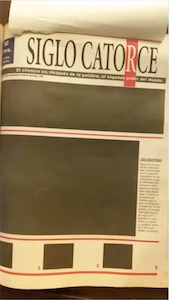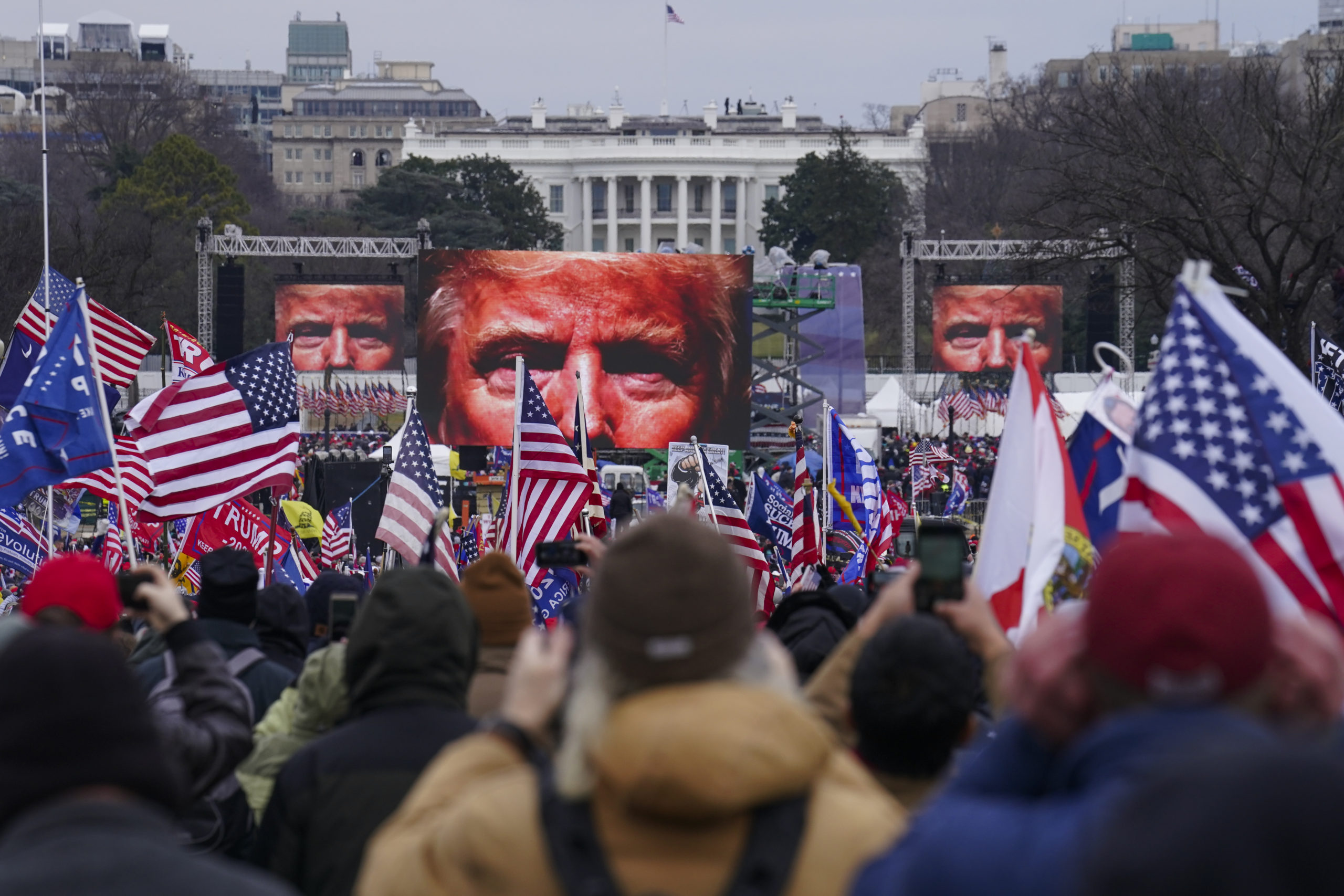It was never going to work for one simple reason: President Trump and his supporters had failed to take the TV stations.
In this case, “TV stations” means getting hundreds of journalists and dozens of news organizations to stop informing the public about what was happening in the U.S. Capitol on Jan. 6, 2021.
I have been following the hearings on the riot at the Capitol and Trump’s attempt to overturn the results of the 2020 presidential election, and a recurring thought is wondering how naïve the former president and his minions had to be to think they could succeed in the face of independent, relentless, and uninterrupted coverage by reporters on the ground.
Because a basic condition of any attempt to overthrow a government in recent history is that the plotters must get mass media to either go dark or lie about what is happening and create a narrative saying the attempted coup is legitimate and good for the country.
They need the press to impose a sense of national emergency and that will validate any attempt to overthrow democratic rules. If it was hard in the pre-Internet days, it is nearly impossible today.
It used to be that plotters just needed to take the TV towers and radio antennas or commandeer the printing presses, sometimes even resorting to kidnapping or jailing independent journalists. Now, with so many outlets and a wider flow of information, it is impossible to shut coverage down, and the chances of success decrease.
There was another recurring thought, one that came from watching the Jan. 6 hearings from Latin America. I kept thinking of Perú and Guatemala, and that history had come full circle. The playbook that Trump and his advisers were following was written south of the border, in a region that has had more authoritarian leaders and lectures from the U.S. about democracy than we care to count.
Those countries experienced “self-coups,” attempts by their presidents to stay in power or increase their power, rather than seize it. Watching the hapless attempts by Trump to overturn the results in a legislature that would not bend to his will, I kept thinking about how Alberto Fujimori tried and succeeded in Perú in 1992, and José Serrano Elías tried and failed in Guatemala in 1993.
For a journalist, these are examples of a bygone era that did not have the essential tools of today: no cellphones, e-mail, chat apps, web pages or social media. But they are important reminders in the role of an independent press in a democracy.
On March 5, 1992, María Luisa Martínez, a correspondent for Univision in Perú, heard from her camera operator, Gilberto Hume, about reports on the police scanner of movement in the congressional building in Lima. They raced in the early morning hours and managed to get the first footage of troops rolling in.
For months, Peruvian president Alberto Fujimori was battling Congress for approval of his economic policies and his plan to fight the terrorist group Shining Path. Blocked by legislators, on March 5, Fujimori had enough and announced he was “dissolving” the Legislature.
But Fujimori had orchestrated things well. Not only did he have the support of the armed forces, he had the press behind him. “He took care of controlling the media companies beforehand,” Martínez told me. She recalls a meeting of the country’s most prominent media executives in the days before the coup. “They knew what was coming,” she says.
In the early moments of the coup, radio and TV stations reported the troop movements, but after Fujimori went on a national broadcast to announce he was dissolving Congress, Martínez said, “the media folded.” The president ordered the arrest of Gustavo Gorriti, one of the country’s foremost independent journalists, which had a chilling effect on the press. Newsrooms at the major dailies and radio and TV stations accepted censors.
But the “self-coup” also had popular support, and that is why it succeeded. “If the press had questioned Fujimori maybe it could have been reversed, but he was cunning,” said Martínez.
Fujimori would go on to dominate Peruvian politics for the rest of the 1990s, until his downfall in 2000 after videotapes broadcast by a small TV channel exposed his main advisor, Vladimiro Montesinos, dealing bribes to an opposition politician and to media executives. “That was when Fujimori lost the support of the media, only after they were exposed,” said Martínez.
But journalists in Perú have not reckoned with their submission to Fujimori, Martínez says, citing as evidence the fact that most major media outlets have endorsed Keiko Fujimori, the daughter of the former president, in her various campaigns.
In Guatemala’s long history of political violence, every time there was a coup d’etat, radio programs would be replaced by marimba music, recalls Ana Carolina Alpírez. So, when marimba music began playing on the radio on May 25, 1993, she knew something was up.
It turned out that president Jose Serrano Elías had decided to imitate Fujimori, and after his alliances in Congress had crumbled, he announced the dissolution of Congress and the suspension of the Constitution.
Alpírez, working for the Spanish news agency EFE, heard the houses of the leaders of the legislative and judicial branched were surrounded by troops, when Serrano called a press conference.

“But during the hours between Serrano’s announcement and his press conference, the press began to question and investigate,” Alpírez told me. Those were crucial hours that showed the president was missing a key element: control of the media. Journalists questioned Serrano at the press conference and, when the president ordered censorship of the main newspapers, these were printed with blank spaces in protest. Siglo 21 mockingly changed its name to Siglo 14 to symbolize the regression, from the eve of the 21st century back to the 14th century.
Some radio and TV stations were silenced but others continued to cover what was going on in the streets. “And for people to take a newspaper with blank pages, it was a sign that something was happening,” said Alpírez.
Later, the fragmented opposition came together to denounce the coup, and the Constitutional Court rebuked Serrano. Business leaders, academics, and activists came together to tell Serrano he could not remain in power. Even if he had the military’s support, it was not enough, and Serrano resigned and fled to El Salvador before settling in Panama.
The media never ceased coverage during the week of the failed self-coup, until a person that had not supported Serrano, Ramiro de León, was elected president.
Martínez and Alpírez were working for foreign media outlets at the time of these coups and were less subject to censorship or attack. Going against foreign correspondents would damage the quest for international support that Fujimori and Serrano sought.
In Guatemala, Alpírez recalled, the only action the government took against EFE was shutting communications to their offices. “But we just went to a hotel and transmitted from there,” she says.
Martínez told me she was not attacked, even as she and Gilberto were the first journalists at the scene when troops began rolling into the congressional building. Coverage by foreign press is also a powerful lens to view these events. Their footage includes images of her reporting on camera while an armed soldier is shouting at her to leave, but no acion is taken when she refuses.
Even three decades later, both Martínez and Alpírez told me they were feeling goosebumps as they were recalling the coups they covered. It happens when covering big events. Jan. 6, 2021 will be no exception, and in 30 years reporters will feel goosebumps when they talk about it. They will share something in common with their Latin American colleagues.



